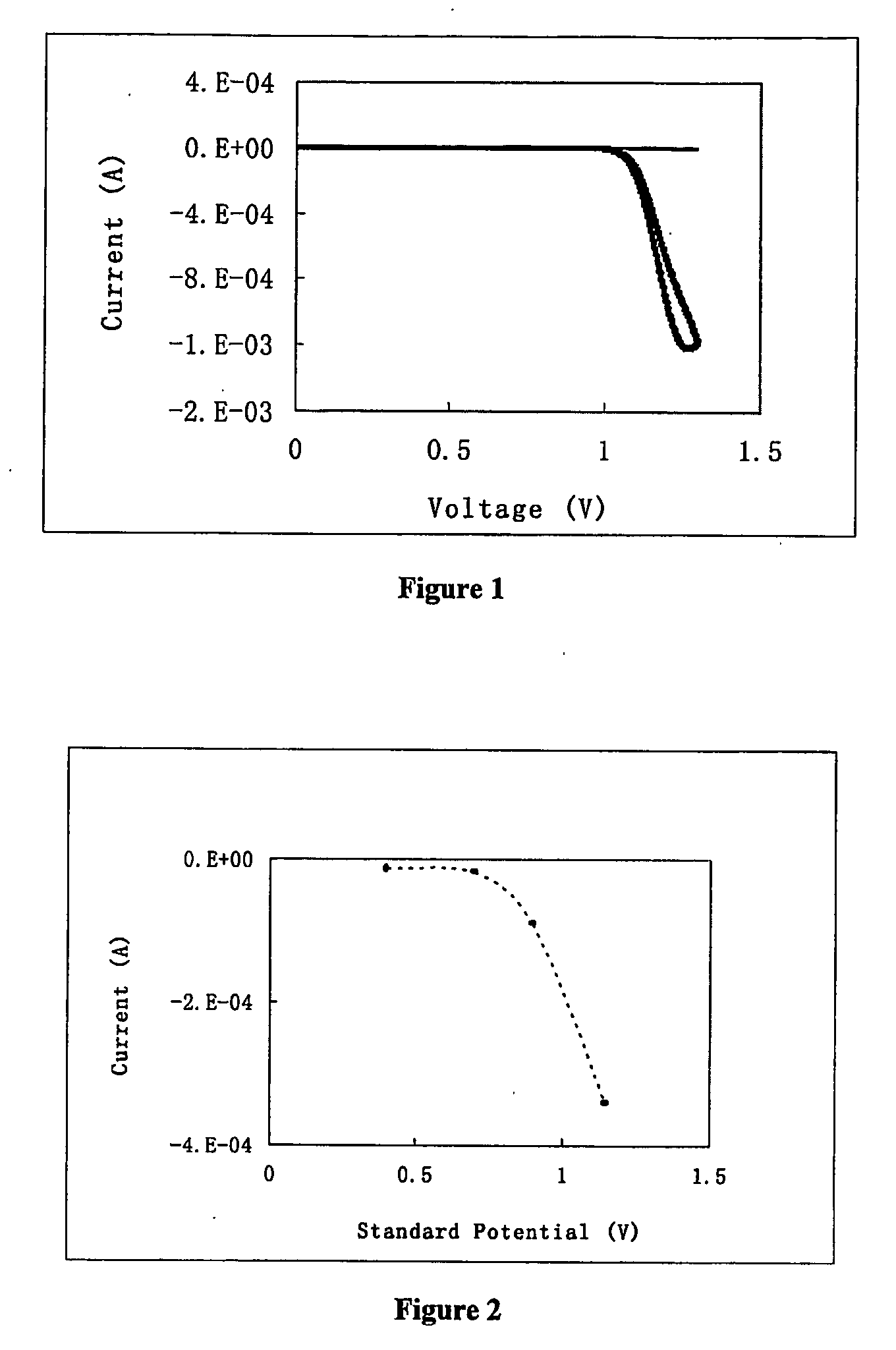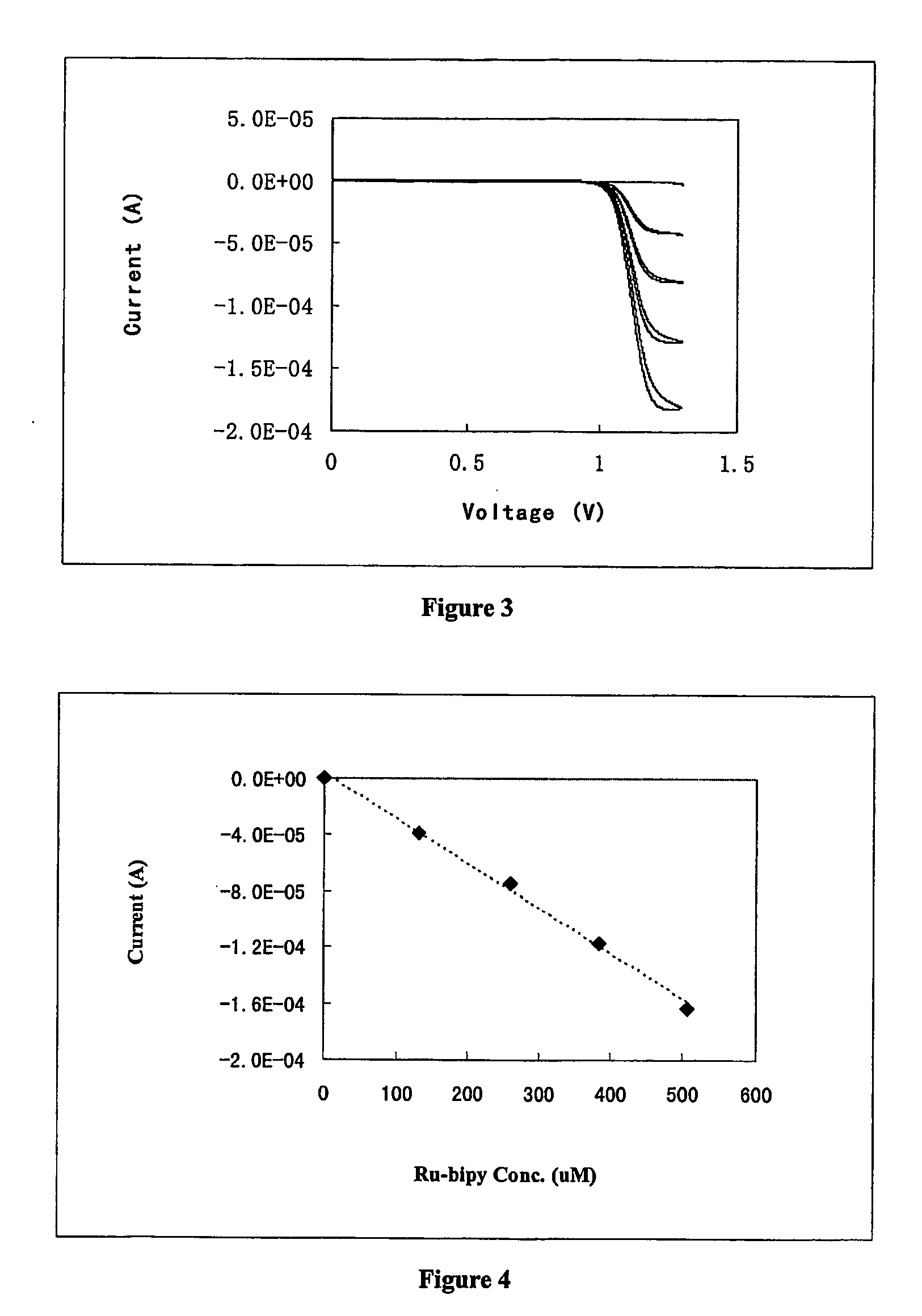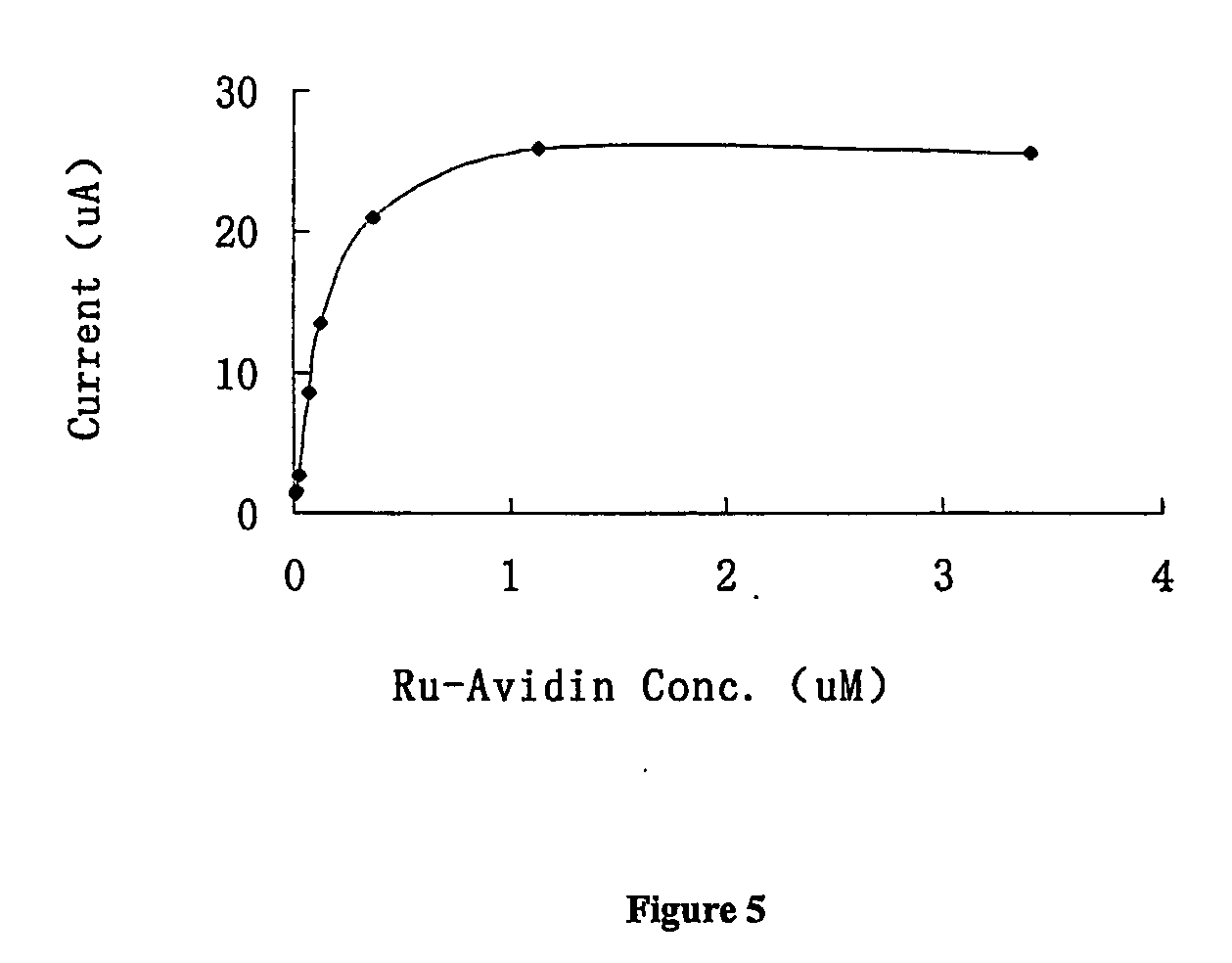Chemically amplified electrochemical detection of affinity reaction
an affinity reaction and electrochemical technology, applied in the field of electrochemistry, can solve the problems of short shelf life, hazardous to human health, and insufficient stability of enzyme labels for long-term storage, and achieve the effect of lowering the cost of instruments
- Summary
- Abstract
- Description
- Claims
- Application Information
AI Technical Summary
Benefits of technology
Problems solved by technology
Method used
Image
Examples
example 1
Oxalate-Amplified Electrochemical Current of Ruthenium tris-(bipyridine)
[0074] Ruthenium tris(2,2′-bipyridine) was purchased from Alfa Aesar, sodium oxalate from Avocado. A solution was prepared which contained 10 mM sodium oxalate, 0.5 mM ruthenium tris-(bipyridine), 0.1M sodium phosphate, pH 5.5. Electrochemical measurement was performed on a CHI 630A electrochemical analyzer. The working electrode was indium tin oxide film coated on glass slide with an area of 0.8 cm2. A platinum foil was used as the counter electrode, and saturated calomel as reference. To perform the measurement, electrode voltage was scanned from 0 V to 1.3 V then back to 0 V at a rate of 100 mV / s. The current during the scan was recorded. The current was plotted against the voltage, as illustrated in FIG. 1. The thick line is for the solution containing ruthenium tris-(bipyridine), whereas the thin line is for the solution without the metal complex.
example 2
Oxalate-Amplified Electrochemical Current of Various Metal Complexes
[0075] Ferrocene monocarboxylic acid was purchased from Alfa Aesar. Osmium and iron tris(2,2′-bipyridine) were synthesized according to the literature [please cite the reference].
[0076] Solutions were prepared which contained 10 mM sodium oxalate, 0.5 mM metal complex, 0.1M sodium phosphate, pH 5.5. Electrochemical measurement was performed as described in Example 1. The maximum current for each metal complex was plotted as a function of its standard potential, as illustrated in FIG. 2. Ruthenium tris(2,2′-bipyridine), which has the most oxidizing standard potential, produced the largest current.
example 3
Electrochemical Current of Ruthenium tris(2,2′-bipyridine) Amplified by Various Reducing Agents
[0077] Reducing agents were purchased from the following vendors, and were used without further purification, PIPES (ICN), tripropyl amine (Alfa Aesar), HEPES (Avocado), proline (Alfa Aesar), tributyl amine (Shanghai United Chemicals, Shanghai, China), triehtyl amine (Shanghai United Chemicals, Shanghai, China).
[0078] Solutions were prepared which contained 10 mM reducing agent in 0.1M sodium phosphate. After electrochemical measurement of the reducing agent to get background current, ruthenium tris(2,2′-bipyridine) was added to a final concentration of 0.5 mM. The amplified current was measured in the same way as the background current. Amplification factor was obtained by first dividing the amplified current with the background for all the voltages, then choosing the maximum. The data in Table 1 below shows that oxalate had the highest amplification factor.
TABLE 1Amplification factor...
PUM
| Property | Measurement | Unit |
|---|---|---|
| area | aaaaa | aaaaa |
| voltage | aaaaa | aaaaa |
| soluble | aaaaa | aaaaa |
Abstract
Description
Claims
Application Information
 Login to View More
Login to View More - R&D
- Intellectual Property
- Life Sciences
- Materials
- Tech Scout
- Unparalleled Data Quality
- Higher Quality Content
- 60% Fewer Hallucinations
Browse by: Latest US Patents, China's latest patents, Technical Efficacy Thesaurus, Application Domain, Technology Topic, Popular Technical Reports.
© 2025 PatSnap. All rights reserved.Legal|Privacy policy|Modern Slavery Act Transparency Statement|Sitemap|About US| Contact US: help@patsnap.com



